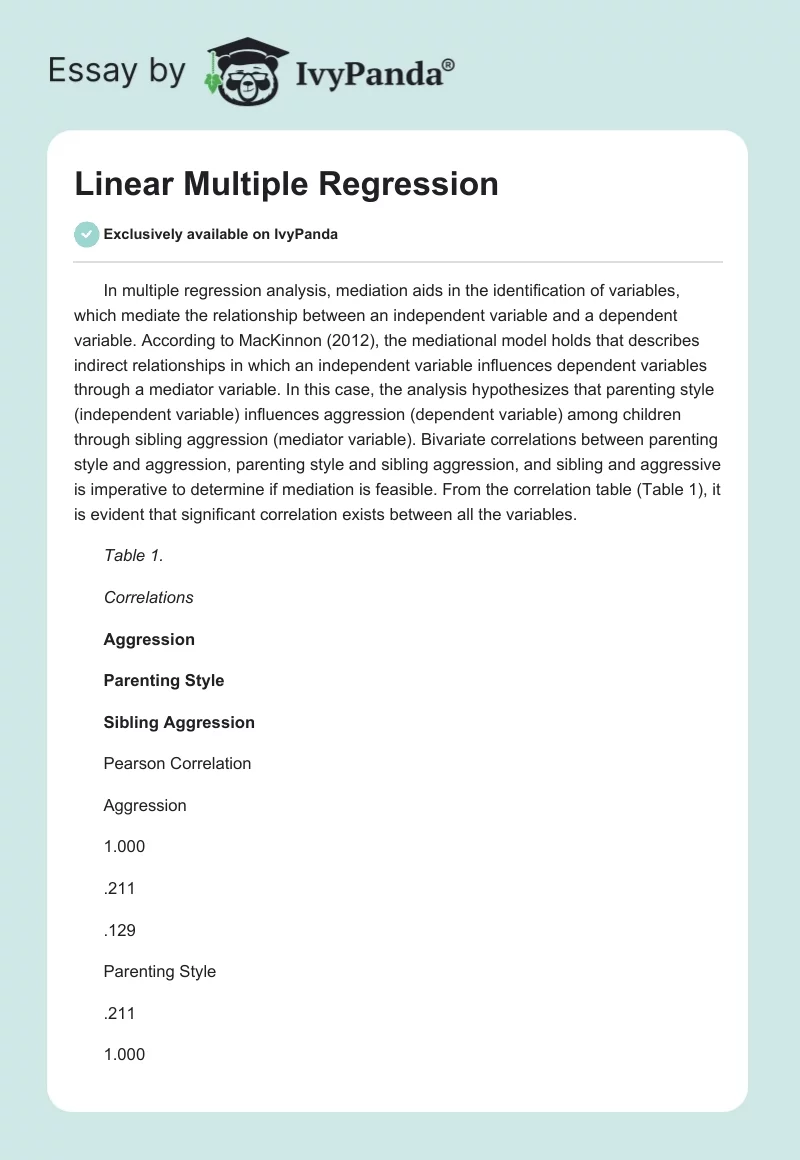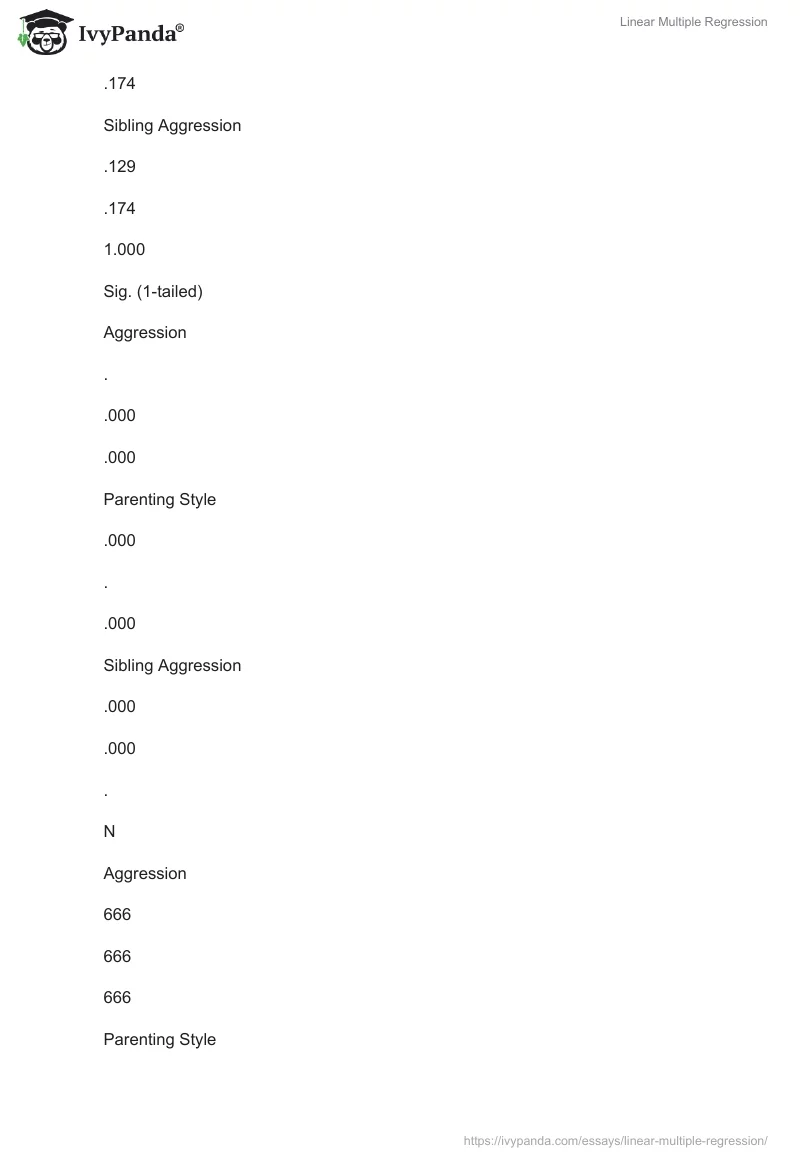In multiple regression analysis, mediation aids in the identification of variables, which mediate the relationship between an independent variable and a dependent variable. According to MacKinnon (2012), the mediational model holds that describes indirect relationships in which an independent variable influences dependent variables through a mediator variable. In this case, the analysis hypothesizes that parenting style (independent variable) influences aggression (dependent variable) among children through sibling aggression (mediator variable). Bivariate correlations between parenting style and aggression, parenting style and sibling aggression, and sibling and aggressive is imperative to determine if mediation is feasible. From the correlation table (Table 1), it is evident that significant correlation exists between all the variables.
Table 1.
The model summary table (Table 2) presents two regression models, which depict explanatory powers and mediation effects of sibling aggression. The first model suggests that parenting style and aggression have a weak positive correlation (R = 0.211). The model also suggests that parenting style explains 4.4% of the variation in aggression among children (R = 0.044), which is significant. The second model shows that the independent variables, parenting style and sibling aggression, and the dependent variable, aggression have a weak positive correlation coefficient (0.231). The model also shows that parenting style and sibling aggression explains 5.3% of the variation in aggression. Comparison of the two models depicts that sibling aggression is a significant mediator of aggression because it increased correlation coefficient by 0.02 and explanatory power by 0.9%.
Table 2.
Table 3.
Table 3 is ANOVA table, which indicates that the first model, [F(1,664) = 30.844, p = 0.000] and the second model [F(1,664) = 17.066, p = 0.000] are significant in predicting aggression among children.
Table 4.
Table 4 depicts how each independent variable significantly contributes to the models (p < 0.05). Field (2013) states that model parameters provide coefficients, which define regression equation. The equations formulated from the coefficients of the two models are:
- Aggression = -0.005 + 0.067(Parenting style)
- Aggression = -006 + 0.062(Parenting style) + 0.093(Sibling aggression)
The first equation means that a unit increase in parenting style results in an increase of aggression by 0.067. The second equation means that a unit increase in parenting style and sibling aggression results in an increase of aggression by 0.062 and 0.093 respectively when each variable is constant. Therefore, sibling aggression is a significant mediator of the relationship between parenting style and aggression.
References
Field, A. (2013). Discovering statistics using SPSS (4th ed.). London: SAGE Publisher.
MacKinnon, D. (2012). Introduction to Statistical Mediation Analysis. New York: Routledge


